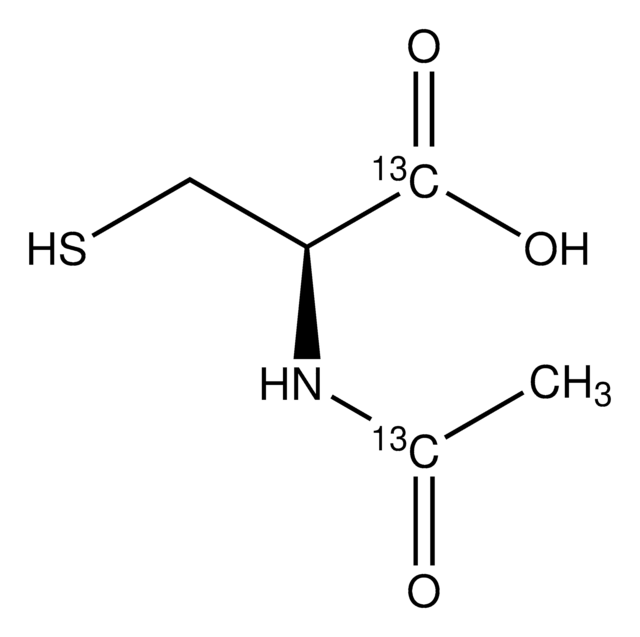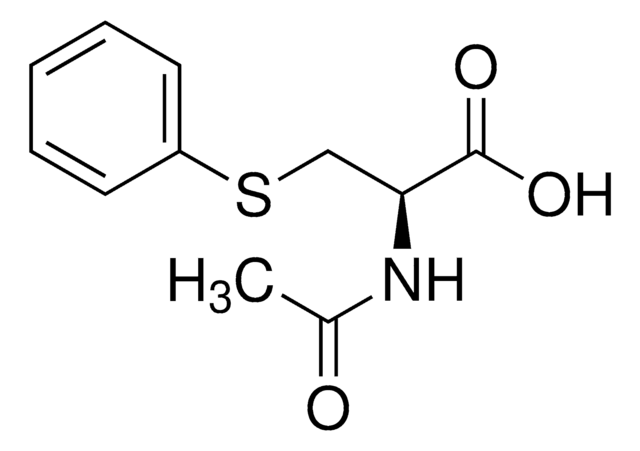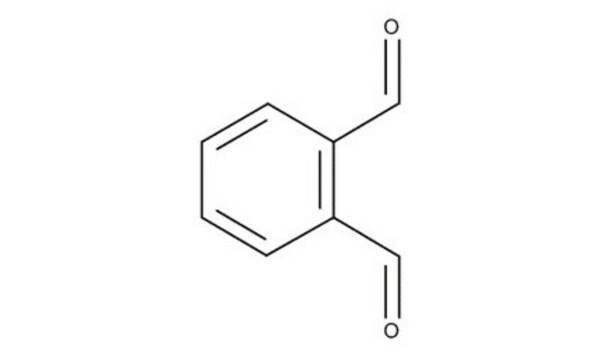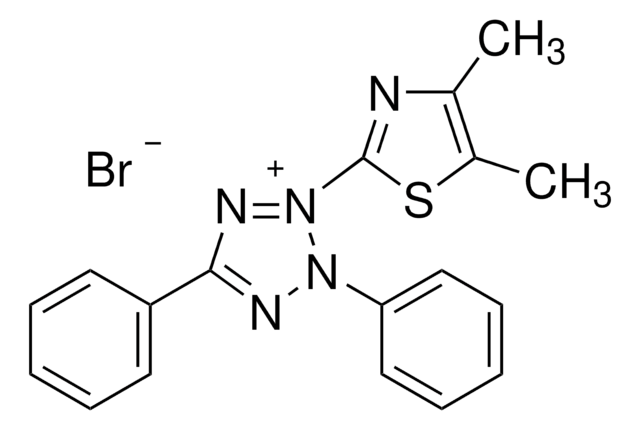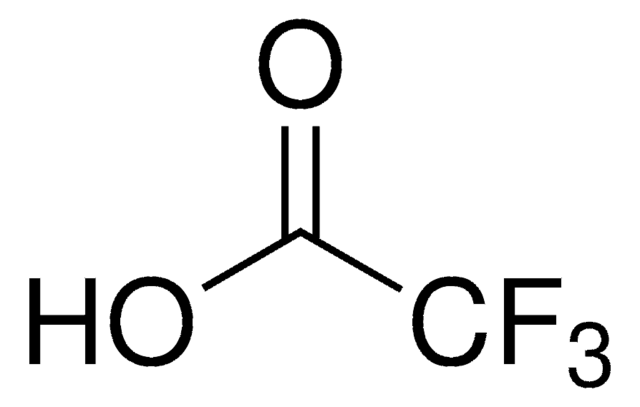1.12422
N-Acetyl-L-cysteine
for biochemistry
Sinónimos:
N-Acetyl-L-cysteine, 2-Acetamido-3-mercaptopropionic acid
About This Item
Productos recomendados
presión de vapor
<1 hPa ( 20 °C)
Nivel de calidad
formulario
solid
potencia
5050 mg/kg LD50, oral (Rat)
pH
1.5-2.5 (20 °C, 100 g/L in H2O)
mp
110.4 °C
solubilidad
179.5 g/L
densidad
1.48 g/cm3 at 20 °C
densidad aparente
730 kg/m3
temp. de almacenamiento
2-30°C
InChI
1S/C5H9NO3S/c1-3(7)6-4(2-10)5(8)9/h4,10H,2H2,1H3,(H,6,7)(H,8,9)
Clave InChI
PWKSKIMOESPYIA-UHFFFAOYSA-N
Categorías relacionadas
Aplicación
- Development and characterization of a spray-dried inhalable ternary combination for the treatment of Pseudomonas aeruginosa biofilm infection in cystic fibrosis: This study presents a novel N-Acetyl-L-cysteine application in aerosol form designed to treat Pseudomonas aeruginosa biofilm infections in cystic fibrosis patients, highlighting its potential to improve pulmonary function and reduce bacterial colonization (Alhajj et al., 2024).
- Emetine induces oxidative stress, cell differentiation and NF-κB inhibition, suppressing AML stem/progenitor cells: Research indicates that N-Acetyl-L-cysteine, as part of a combinatory therapy, enhances the oxidative stress response in acute myeloid leukemia, providing a therapeutic strategy for targeting leukemia stem cells (Silva et al., 2024).
- N-acetylcysteine Treatment in Chronic Obstructive Pulmonary Disease (COPD) and Chronic Bronchitis/Pre-COPD: Distinct Meta-analyses: This meta-analysis reveals N-Acetyl-L-cysteine′s effectiveness in reducing exacerbations and improving antioxidant defense in COPD and chronic bronchitis, suggesting a significant therapeutic benefit in respiratory disease management (Papi et al., 2024).
- Tannic acid- and N-acetylcysteine-chitosan-modified magnetic nanoparticles reduce hepatic oxidative stress in prediabetic rats: N-Acetyl-L-cysteine, used in modifying magnetic nanoparticles, shows promising results in reducing oxidative stress and liver damage in a prediabetic rat model, underscoring its potential in preventive therapies (Świętek et al., 2024).
- Phenylarsine oxide induced corneal injury involves oxidative stress mediated unfolded protein response and ferroptotic cell death: Amelioration by NAC: This research outlines N-Acetyl-L-cysteine′s role in mitigating oxidative stress and ferroptosis in corneal cells, providing insights into its protective effects against chemical-induced ocular damage (Kandhari et al., 2023).
Nota de análisis
Identity (IR-spectrum): passes test
Appearance: white to almost white, crystalline powder or colorless crystals
Appearance of solution (1 mol/l, water): clear and colorless
Spec. rotation (α 20/D, 50 g/l, buffer pH 7.0): +21.0 to +27.0
Heavy metals (as Pb): ≤ 0.001 %
NH₄ (Ammonium): ≤ 0.01 %
L-cysteine (HPLC): ≤ 0.02 %
Other ninhydrine positive substances: ≤ 0.1 %
Palabra de señalización
Warning
Frases de peligro
Consejos de prudencia
Clasificaciones de peligro
Eye Irrit. 2
Código de clase de almacenamiento
13 - Non Combustible Solids
Clase de riesgo para el agua (WGK)
WGK 2
Punto de inflamabilidad (°F)
Not applicable
Punto de inflamabilidad (°C)
Not applicable
Certificados de análisis (COA)
Busque Certificados de análisis (COA) introduciendo el número de lote del producto. Los números de lote se encuentran en la etiqueta del producto después de las palabras «Lot» o «Batch»
¿Ya tiene este producto?
Encuentre la documentación para los productos que ha comprado recientemente en la Biblioteca de documentos.
Los clientes también vieron
Nuestro equipo de científicos tiene experiencia en todas las áreas de investigación: Ciencias de la vida, Ciencia de los materiales, Síntesis química, Cromatografía, Analítica y muchas otras.
Póngase en contacto con el Servicio técnico
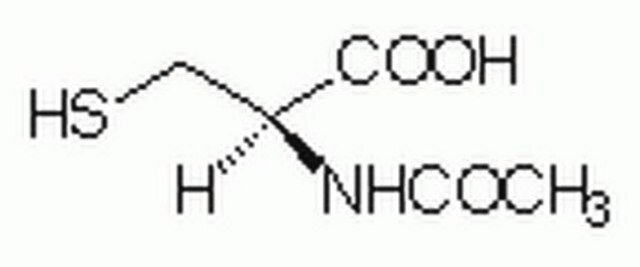



![Sodium nitroprusside dihydrate [disodium pentacyanonitrosyl ferrate(III) dihydrate] GR for analysis ACS,Reag. Ph Eur](/deepweb/assets/sigmaaldrich/product/images/350/751/c4f466f3-0750-4cb4-af8f-5942eba5d12f/640/c4f466f3-0750-4cb4-af8f-5942eba5d12f.jpg)

